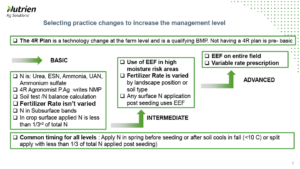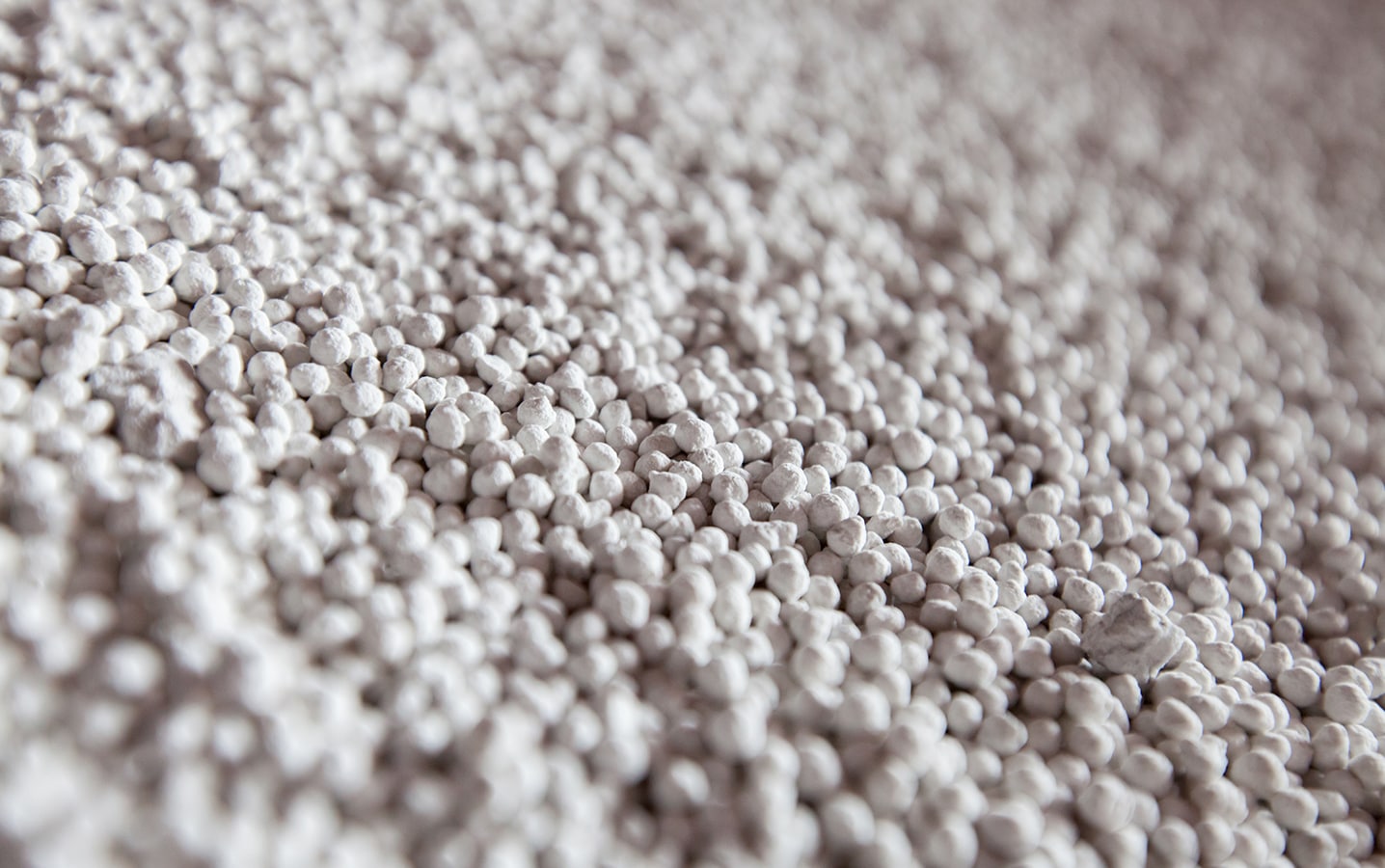When do enhanced efficiency fertilizers make sense?
A spring 2022 scenario: Soil moisture is short and yield projections are below average. Adding to that, soil tests show a decent amount of residual nitrogen after lower yields in 2021, and fertilizer prices are higher than average. A farmer chooses a lower fertilizer rate based on all of these factors. That is the best decision based on what the farmer knows at the time of seeding.
After seeding, the forecast shows rain and the farmer wonders about a fertilizer top-dress to take advantage of a possible increase in yield potential. The farmer knows that a nitrogen top-dress should go on before the five-leaf stage of canola and that applying before a rain is best because that rain will move the fertilizer down into the root zone. So the farmer uses a spinner to broadcast an extra 30 pounds per acre
of urea.
Then the rain comes, as forecast, but it’s only one tenth of an inch.
“That is the worst-case scenario,” says Mario Tenuta, industrial research chair in 4R nutrient stewardship and professor at the University of Manitoba.
The rain is just enough to wet the urea but not enough to move the fertilizer into the soil. “So the nitrogen will volatilize,” says Tenuta. It vaporizes and disperses into the air, and a large percentage of the investment is lost.
One way to protect this surface-applied urea is with a urease inhibitor, which prevents volatilization until a good soaking rain comes along.
The family of EEFs
Enhanced efficiency fertilizers (EEFs) to prevent nitrogen loss come in three main forms: urease inhibitors, nitrification inhibitors and controlled-release nitrogen.
Urease inhibitors. These prevent the conversion of urea to ammonia, reducing volatilization losses from broadcast applications of urea. This gives more time for the urea to be solubilized and absorbed into the soil. Options include Agrotain, Anvol and others. Ask your fertilizer retailer what they offer.
Nitrification inhibitors. These slow the bacteria that convert ammonium to nitrate, keeping nitrogen in ammonium form for longer. This reduces the risk of leaching, denitrification and nitrous oxide emissions. Benefits are greatest in wet soils. Nitrification inhibitors are available for urea, UAN, anhydrous ammonia and liquid manure. Common options include Centuro, N-Serve, eNtrench NXTGEN and Nitrolizer Dart as well as generics and others.
Controlled-release nitrogen. Polymer-coated urea releases nitrogen slowly into the soil under moist and warm soil conditions. Benefits increase if fertilizer is in the soil for an extended time before crop uptake, say with fall application. The widely available option is ESN.
Combinations. Nitrolizer Duo, SuperU and Tribune are dual (or double) inhibitors that contain a nitrification inhibitor and a urease inhibitor.
Each will have its own suggested retail price. For a ballpark estimate, budget $5 to $10 per acre for urease inhibitors or nitrification inhibitors and $10 to $15 per acre for ESN and combination products.
From basic to advanced 4R

Source: Nutrien
When to use them
The scenario described at the top of the article is just one risk situation where an EEF could help. In most cases, the risk of loss is highest when soils have excess moisture. Broadcast applications and early fall applications also increase the risk due to exposure and time.
EEFs can improve nitrogen use efficiency (more yield and reduced losses from each pound applied) and reduce nitrous oxide emissions.
Michelle Nutting, Nutrien’s global lead for agricultural and environmental sustainability, says EEFs can be effective tools for intermediate and advanced 4R nutrient management. (See the 4R graphic.)
Before jumping to EEFs, Nutting would like to see farmers start with a basic 4R nutrient management plan. “Deal with right rate, right time and right placement first,” Nutting says. Spring banding at the time of seeding with a rate based on soil tests is a good 4R practice for nutrient use efficiency. “Once these steps are in place, farmers can then look closely at how they may improve the source,” Nutting says. “All of the sources
can be ‘right’ from a 4R perspective, but to go another step to reduce greenhouse gas emissions, that’s when we look at EEFs.”
“EEFs are the right choice when part of the field has moisture pressure, such as in spring when saturated soils are thawed and microbial activity increases and nitrous oxide emissions increase,” Nutting says. “Also consider EEFs in any parts of the field, like low spots or poorly-drained areas, that are prone to saturation during the growing season.”
EEFs can also reduce losses when fall fertilizer is banded before soils have cooled. Warm soils have more biological activity, so the conversion of ammonium to nitrate is more likely to occur. This is a good time to use nitrification inhibitors, which slow this conversion.
Warren Ward, agronomy specialist and fertilizer management lead with the Canola Council of Canada, encourages canola growers to take a look at their systems and determine where losses are most likely. “That will help in deciding which product will give you the maximum benefit,” Ward says.
“If you plan to make a shortcut, think about how to minimize your losses with the use of an EEF.”
While EEFs may not always pencil out from a yield perspective alone, they will show more value in reducing nitrous oxide emissions. Tenuta is just wrapping up a grower-funded study looking at optimal fertilizer practices for yield and for reduction of greenhouse gas emissions in light-textured soils, a follow up to a previous study on Red River Valley clay. Key conclusions are that fall-applied nitrogen is generally worse for yield, and EEFs only provide an economic advantage in situations with excess moisture.
However, he did find that nitrification inhibitors show a “clear reduction in nitrous oxide emissions,” Tenuta says. “As greenhouse gas emissions become a bigger part of farm management, nitrification inhibitors will have more value because they really target the process that produces nitrous oxide.”





